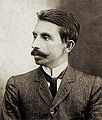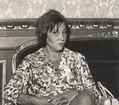Brazilian literature
This article needs additional citations for verification. (January 2017) |
| Part of a series on the |
| Culture of Brazil |
|---|
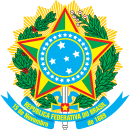 |
| Society |
|
| Topics |
|
| Symbols |
Brazilian literature is the literature written in the Portuguese language by Brazilians or in Brazil, including works written prior to the country's independence in 1822. Throughout its early years, literature from Brazil followed the literary trends of Portugal, gradually shifting to a different and authentic writing style in the course of the 19th and 20th centuries, in the search for truly Brazilian themes and use of Brazilian forms.

Portuguese is a
Brazil's most significant literary award is the
Brazilian literature has been very prolific. Having as birth the
Colonial period

One of the first extant documents that might be considered Brazilian literature is the
A few more explicitly literary examples survive from this period, such as
Romanticism
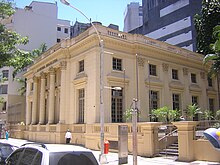

Neoclassicism lasted for an unnaturally long time, stifling innovation and restricting literary creation. It was only in 1836 that Romanticism began influencing Brazilian poetry on a large scale, principally through the efforts of the expatriate poet Gonçalves de Magalhães. A number of young poets, such as Casimiro de Abreu, began experimenting with the new style soon afterward. This period produced some of the first standard works of Brazilian literature.
The key features of the literature of the newborn country are exaggerated affect, nationalism, celebration of nature and the initial introduction of colloquial language. Romantic literature soon became very popular. Novelists like Joaquim Manuel de Macedo, Manuel Antônio de Almeida and José de Alencar published their works in serial form in the newspapers and became national celebrities.
Around 1850, a transition began, centered on Álvares de Azevedo. Azevedo's short story collection Noite na Taverna (English: A Night at the Tavern) and his poetry, collected posthumously in Lira dos Vinte Anos (English: Twenty-year-old Lyre), became influential. Azevedo was largely influenced by the poetry of Lord Byron and Alfred de Musset. This second Romantic generation was obsessed with morbidity and death.
At the same time, poets such as
Realism
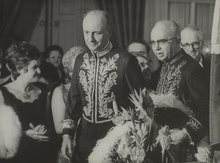


The decline of Romanticism, along with a series of social transformations, occurred in the middle of the 19th century. A new form of prose writing emerged, including analysis of the indigenous people and description of the environment, in the regionalist authors (such as Franklin Távora and João Simões Lopes Neto). Under the influence of Naturalism and of writers like Émile Zola, Aluísio Azevedo wrote O Cortiço, with characters that represent all social classes and categories of the time. Brazilian Realism was not very original at first, but it took on extraordinary importance because of Machado de Assis and Euclides da Cunha.
Machado de Assis
Usually appointed as the greatest Brazilian writer of all times, Joaquim Maria Machado de Assis (1839–1908) is also the most important writer of Brazilian Realism. Born in Rio de Janeiro City (by the time, imperial capital of Brazil), he was the natural son of a half-black wallpainter and a Portuguese woman, whose only education, besides literacy classes, was the extensive reading of borrowed books.
Working as typesetter at a publishing house, he was soon acquainted with most of the world's literature and became fluent in English and French. In his early career he wrote several best-selling novels (including A Mão e a Luva and Ressurreição) which, despite their overzealous Romanticism, already show his vivacious humour and some of his pessimism towards the conventions of society.
After being introduced to Realism, Machado de Assis changed his style and his themes, producing some of the most remarkable prose ever written in Portuguese. The style served as the medium for his corrosive humour and his intense pessimism, which was very far from the plain conceptions of his contemporaries.
Machado's most crucial works include:
- Memórias Póstumas de Brás Cubas (The Posthumous Memoirs of Brás Cubas), the fictional autobiography of a recently deceased man, written by himself "from beyond". It is entirely anti-Romantic and ridicules the society of Rio de Janeiro of the time. This book contains one of the most pitiless sentences about love ever written: "Marcela amou-me durante quinze meses e onze contos de réis; nada menos". (Marcela loved me for fifteen months and eleven thousand réis; nothing less.)
- Dom Casmurro purports to be the autobiography of a lonely man who has left his wife and his only son after enjoying years of happy conjugal life. The novel is famous in the Portuguese-speaking world for its analysis of a (possible, but never proven or admitted) case of adultery.
- Quincas Borba
- O Alienista, the short story about a psychiatristwho founds a hospital for the mentally ill in a small town and later engages in profound investigations on the nature and the cure of mental illness, greatly upsetting the town's lifestyle.
Machado was also a minor poet, writing mostly casual poetry of extraordinary correctness and beauty. His reputation as a novelist has kept his poetry in print, and recent criticism has regarded it better than that of many of his contemporaries.
Pre-Modernism
| History of modern literature | |||||||||
|---|---|---|---|---|---|---|---|---|---|
| By decade | |||||||||
| Early modern by century | |||||||||
| Mid-modern by century | |||||||||
| 20th–21st century | |||||||||
|
|||||||||
| By region | |||||||||
|
|||||||||
| Related topics | |||||||||
|
|||||||||
|
| |||||||||
The period between 1895 and 1922 is called Pre-Modernism by Brazilian scholars because, though there is no clear predominance of any style, there are some early manifestations of Modernism. The Pre-Modern era is curious, as the French school of
Euclides da Cunha
An acclaimed writer highly influenced by
In his work Cunha put forward the revolutionary thesis that the Brazilian state was a violent and foreign entity, rejected (but often tolerated) by the vast majority of the illiterate and dispossessed population, some of whom preserved beliefs and behaviours that had not changed in a thousand years or more. He discovered, for instance, that Sebastianism was then present in the Brazilian North-East and that many medieval Portuguese rhymes, folk-tales and traditions were still kept by the coarse people of the "sertões". This population did not accept secularism, the Republican government and, especially, justice or peace.
His trilogy Os Sertões is composed of three parts titled "The Land", "The Man" and "The fight". Such organization of the book reinforces the idea that the environment where a man was born, the social aspects of his residence and the man's culture may define what he will become. This principle is known as determinism, a way of thought that deeply influenced Brazilian literature during the mid- and late 19th century and the early 20th century.
Modernism
Mário de Andrade
Mário de Andrade was born in São Paulo. He worked as a professor and was one of the organizers of the Week of Modern Art. He researched Brazilian folklore and folk music and used it in his books, avoiding the European style. His Brazilian anti-hero is Macunaíma, a product of ethnical and cultural mixture. Andrade's interest in folklore and his use of colloquial language were extremely influential.
Oswald de Andrade
30s generation
After the modernist critique there was a generation of writers which actually "regressed" in terms of "modernist" ideas of experimentation, and which instead focused on social criticism. In literary criticism however they are mostly regarded as a development within modernism and grouped within the term "Geração de 30"(30s generation).
Jorge Amado, one of best-known of modern Brazilian writers, tried with his novels to approximate his works to a proletarian literature, he himself was a member of the communist party which defended Socialist realism at the time.
Rachel de Queiroz, and José Lins do Rego were other important writers of this generation.
-
Mario de Andrade
Post-Modernism
What defined Brazilian modernism were two main traits: experiments in language and an enhanced social consciousness, or a mix between the two - as was the case with Oswald de Andrade, who was briefly attracted towards the
Two writers from that "school" that have published after the 1950s are without a doubt already inside the canon of Brazilian literature:
Following the wake of conservative subjectivism inaugurated by the militantly Catholic novelists-cum-polemicists
Contemporary
Contemporary Brazilian literature is, on the whole, very much focused on city life and all its aspects: loneliness, violence, political issues and media control. Writers like Rubem Fonseca, Sérgio Sant'Anna have written important books with these themes in the 1970s, breaking new ground in Brazilian literature, up until then mostly having dealt with rural life.
New trends since the 1980s have included works by authors such as Caio Fernando Abreu,
Poets such as Ferreira Gullar and Manoel de Barros are among the most acclaimed within literary circles in Brazil, the former had been nominated for the Nobel Prize.
In recent years, "marginal literature" has risen to prominence with authors and poets such as Sérgio Vaz and Ferréz making appearances at important events like Festa Literária Internacional de Paraty, Flipside and Bienal do Livro de São Paulo.[4] Other poets such as Adélia Prado, Elisa Lucinda, Luis Alexandre Ribeiro Branco, are among the contemporary poets.
See also
- List of Brazilian writers
- Latin American literature
- Angolan literature
- Portuguese literature
- Brazilian art
- Brazilian science fiction
- Modernism in Brazil
References
- ^ Arnaldo Nogueira Jr. "Olavo Bilac - Lнngua portuguesa". Releituras.com. Archived from the original on 2018-07-12. Retrieved 2017-01-26.
- ^ "Prêmio Camões de Literatura | Biblioteca Nacional". Bn.br (in Portuguese). Archived from the original on 2016-03-16. Retrieved 2017-01-26.
- ^ "Quem somos | Academia Brasileira de Letras". Academia.org.br (in Portuguese). 3 August 2014. Retrieved 2017-01-26.
- ^ Blyth, Joanna (2014-09-03). "Brazil's New Literary Encounters | Sounds and Colours". Soundsandcolours.com. Archived from the original on 2015-04-02. Retrieved 2017-01-26.
Bibliography
- Galvão, Walnice Nogueira (2005). As Musas sob Assédio: Literatura e indústria cultural no Brasil (in Portuguese).
- Coutinho, Afrânio (2004). A Literatura no Brasil (in Portuguese).
- Lopes, Denilson (2007). A Delicadeza: estética, experiência e paisagens (in Portuguese).
Further reading
- (in Spanish) Arce, Emilia Isabel. "La institucionalización del rol materno durante gobiernos autoritarios: respuestas de escritoras argentinas y brasileñas a la construcción patriarcal de género y nación". (Archive) (PhD thesis). University of Texas at Austin, May 2009. (English abstract included.)
External links
- Portugueses de Papel A database of Portuguese characters in Brazilian novels









